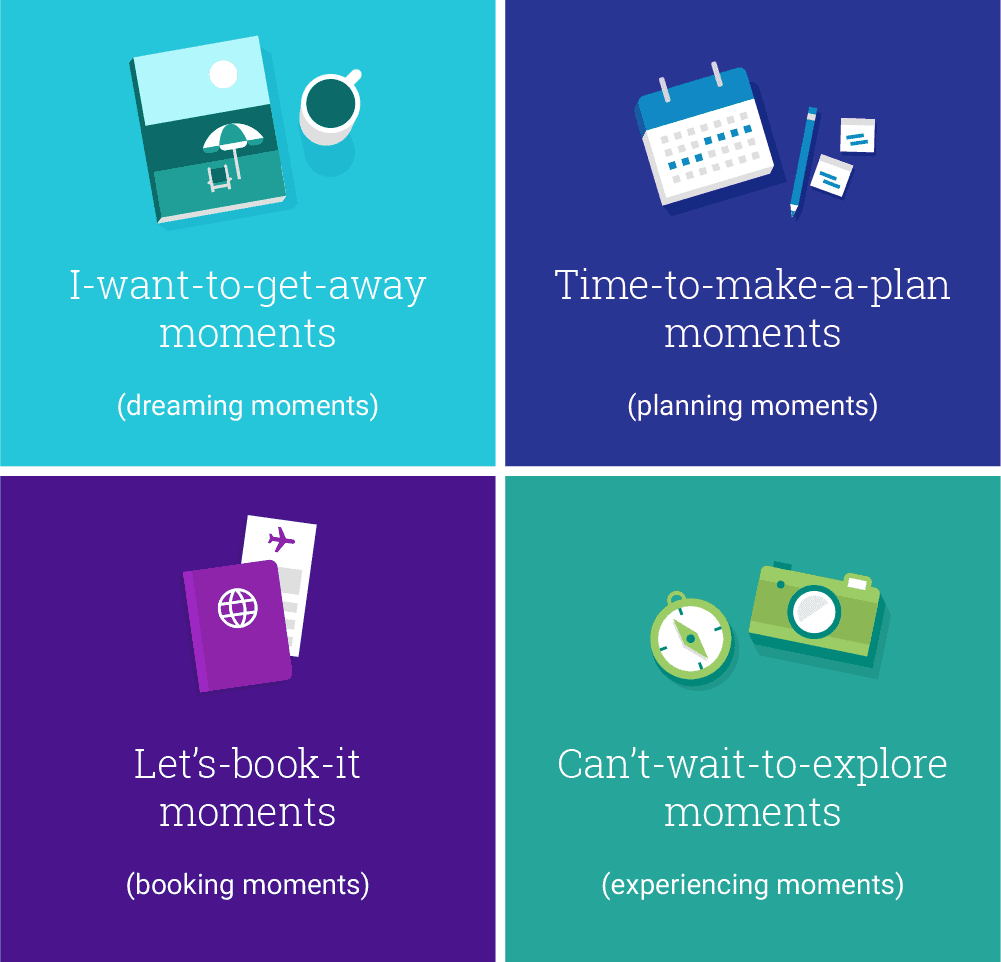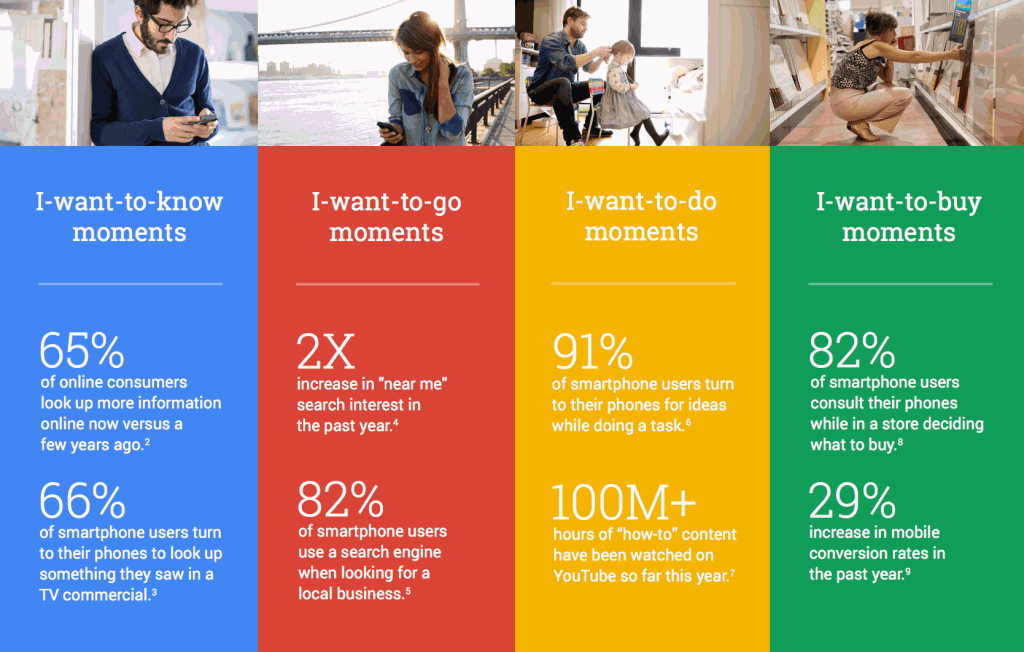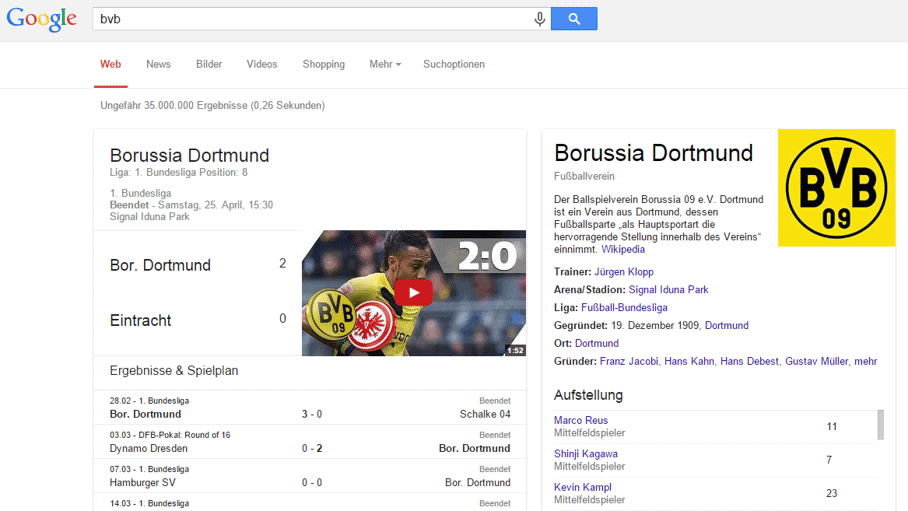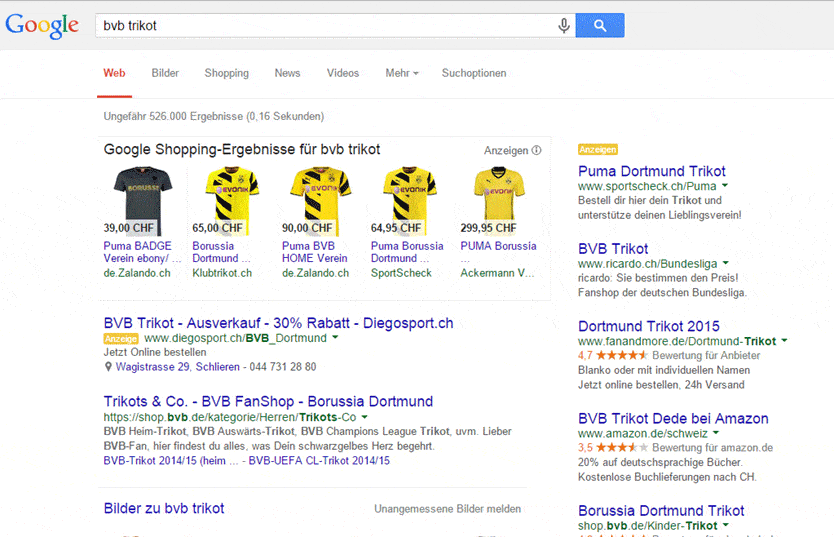
Since the advent of smartphones, more and more users have been using search engines on the spur of the moment and are making a search query ( micro-moment ) in the middle of everyday life. According to Google, most searches fall into one of four main categories (search intentions).

The four main types of micro-moments:
- You want to know something (e.g., from Wikipedia)
- You want to go somewhere (Google Maps, route planner)
- You want to do something (How-to YouTube guide)
- You want to buy something (e-commerce shopping)
Depending on the search intent, the hit list shows explanatory information or a map, instructions, or online shops.
If your website content is to appear high up on search engines, the individual user need must be known and how Google responds to it.
“Micro-Moments” summary
Consumer behavior has changed . Especially since the spread of smartphones. These are available to us at any time and are ideally suited to answer any questions of everyday life. Whether from a discussion, when looking for an address, a guide, or when comparing prices, we always pull out our mobile device and spontaneously look for a solution ( intent-driven micro-moments).
The search query is communicated to Google by voice control or text, and the answer appears as the appropriate result.
To appear at the top of the hit list in these crucial moments, suitable content must satisfy the search intent of the user. If all questions of the searcher are answered, his user behavior will signal this (eg, put away the smartphone, do not return to the hit list after visiting a website), and Google will rate the result shown as right.
For subsequent searches by other users with a similar search profile, Google will again consider the result that satisfied the corresponding search intent in previous searches.
Decisions in the micro-moments determine the success or failure of web offers.
How Google sorts the hit list by relevance
Using various dimensions such as the location of the user, the end device used, the search history, and the useful search content (topics, keywords, and their semantic context), Google tries to identify in milliseconds what the search intent of the user is.
The information about the search intent makes it easier to sort the possible hits by relevance. Olaf Kopp has clearly described this connection in a blog post with our software partner Searchmetrics.
So if you want to optimize your content for high visibility in search engines, you have to identify the search intent of potential prospects.
Then you can publish appropriate content: If you are looking for information about a purchase, you may be interested in the price comparison. Anyone who has already made the purchase decision is looking for an e-commerce shop. That is diametrically different content. On a single page, you will probably not be able to satisfy both search needs in a targeted manner.
Does your information offer answer the most burning questions of users?
The perfect search engine understands precisely what you want to know and delivers the exact result you want.
Larry Page, Google Co-Founder, 2002 (!)
How Google judges the quality of content
But how does Google find out what the relevant answers are to users’ questions?
RankBrain is Google’s filtering algorithm, which brings together the intent of searchers and the context of content in the search results list (to put it very simply).
The Google Quality Rating Guidelines are an excellent source for understanding Google’s demands for good content. One hundred eighty pages define what a good search result is.
The manual testers not only assess the actual websites but also whether they meet the user’s search needs. The inspectors are not only presented with search result lists for assessment, but also with the identified user intent!
Does the content meet Google’s “Quality Rating Guidelines”?
Accordingly, you should put yourself in the position of readers when writing content :
- What is your search intent?
- Which of the four micro-moments does your search belong to?
- Does the published content meet the user’s need at the critical moment?
If the search intent is not met, the readers will leave the found website and switch back to the hit list (referred to as “pogo-sticking”). Google sees this as a negative signal, since the user has probably not found what he was looking for.
The four micro-moments of Google search queries
Google developed the concept of micro-moments to explain the differences between search queries on mobile and desktop: Because the device is always at hand and everywhere and logged in, searches on smartphones often have a secure context, for example, where and when.
Real-time, intent-driven micro-moments are the new battlegrounds.
Joseph Corral, Head of Marketing for Micro-Moments, Google
Joseph has confirmed BlueGlass CEO Raphael Bienz that users click less and less on the 2nd or 3rd page of the Google hit list: They prefer to modify their search if the desired result does not appear on the first page!
According to Google, the average search intention can be divided into four main types:
- I want to know (curiosity, need for information)
- I-Want-to-Do (trigger action, seek advice, find support)
- I-Want-to-buy (something to buy)
- I-Want-to-Go (physically go anywhere)
If you search for “BVB,” for example, information about the Borussia Dortmund football club is displayed (I-Want-to-Know Moment). On the other hand, if you are looking for “BVB jersey,” transactional information from e-commerce shops (I-Want-to-Buy Moment) appears.

Google search for “BVB jersey” with an overlay of e-commerce shops

Google search for “BVB jersey” with overlay of e-commerce shops
If you search for “BVB” again, in contrast to the first search, new advertisements appear that try to skim off a possible purchase intention. For this, Google refers to the search history with the previous search “BVB jersey.”
Micro-Moments Examples “Travel” and “E-Bike”
Every website operator has to break down the micro-moment principle individually to his service. Google offers comprehensive examples and statistics for the travel environment.

Micro moments for booking trips
The identified user needs serve as guidelines for the creation of web content (content marketing): Typically, you should offer a content-relevant page for each topic or question, if possible with explanations, photos, illustrations and, for example, video interviews with product managers or suppliers and producers ( Rich content).
It merely has to be the best website on the internet for a specific question. Then Google will consider the content prominently: If the page answers the topic or question comprehensively and conclusively, the user will be satisfied with it (e.g., long-form content, relevant listicles, good video).
Google registers the excellent usability and then shows the page for the same question from other searchers above in the hit list.
The SEO visibility rises so. If the search snippet is also well written in the hit list (title and description tag), the click rate will increase (CTR) and thus the number of organic visitors to the website.
How do you find the relevant questions for the micro-moments?
The possible decision-making processes of prospective customers and customers (user journeys) can be derived intuitively, or various tools can be used to support them. Google Autosuggest offers practical and free help by supplementing search queries with similar searches.
Also, at the bottom of the search hit list is a list of other searches related to the search term. These are based on statistical data and allow conclusions to be drawn about possible user needs.
Answer The Public also offers keyword evaluations free of charge. Theme trees and other possible questions can be derived from this.
